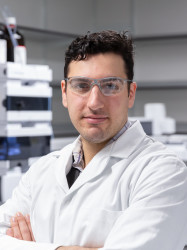BibTex format
@article{Kafizas:2017:10.1021/acs.jpcc.7b00533,
author = {Kafizas, A and Francas, L and Sotelo-Vazquez, C and Ling, M and Li, Y and Glover, E and McCafferty, L and Blackman, C and Darr, J and Parkin, I},
doi = {10.1021/acs.jpcc.7b00533},
journal = {JOURNAL OF PHYSICAL CHEMISTRY C},
pages = {5983--5993},
title = {Optimizing the Activity of Nanoneedle Structured WO3 Photoanodes for Solar Water Splitting: Direct Synthesis via Chemical Vapor Deposition},
url = {http://dx.doi.org/10.1021/acs.jpcc.7b00533},
volume = {121},
year = {2017}
}

